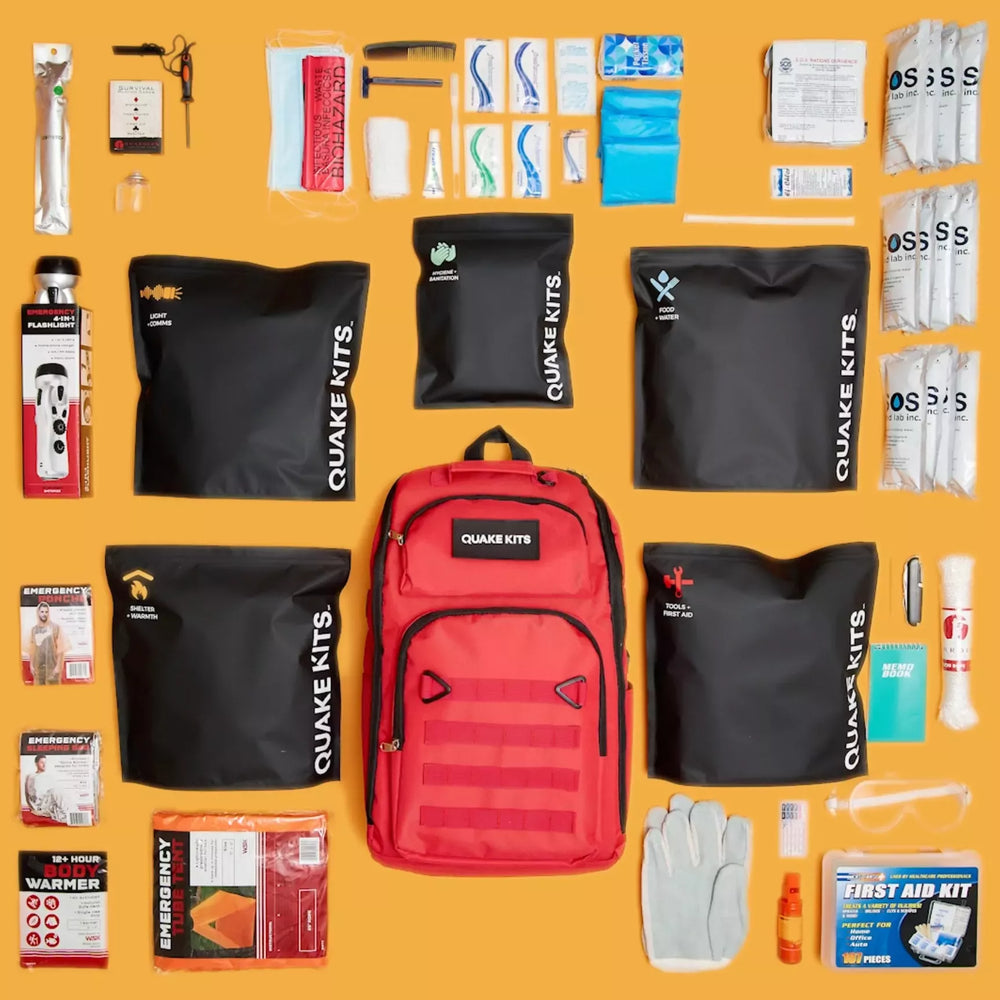Cómo prepararse para un apagón prolongado
El consejo de esta semana sobre preparación para desastres tiene como objetivo brindarles a usted y a su familia información útil sobre cómo prepararse, qué hacer durante un apagón prolongado y cómo regresar después del mismo. La posibilidad de un apagón prolongado debe considerarse en el plan de preparación para emergencias de su familia.
Los apagones prolongados pueden tener un impacto negativo en toda la comunidad y la economía. Cuando se produce un corte de luz inesperado en su comunidad, pueden surgir los siguientes obstáculos importantes en su vida diaria:
- Interrumpir las comunicaciones, el suministro de agua y el transporte.
- Es posible que las tiendas minoristas, supermercados, gasolineras y cajeros automáticos cercanos no estén operativos.
- Deterioro de los alimentos y contaminación del agua.
- Afecta la fiabilidad de los dispositivos médicos necesarios.
Sigue leyendo para obtener más información sobre la preparación y consejos útiles sobre cómo actuar durante un apagón prolongado.
Medidas a tomar para prepararse ante un apagón prolongado
- Crea una red de apoyo. Identifica a personas que puedan ayudarte a evacuar o a permanecer en casa durante un apagón prolongado. Guarda una copia de tu información de contacto en papel en un lugar seguro.
- Manténgase conectado y alerta con las actualizaciones de información local. Regístrese en sistemas de alerta y aplicaciones móviles para recibir mensajes de texto. Guarde en casa dispositivos de comunicación que funcionen sin electricidad, como una radio de manivela o una radio a pilas, y cargadores/baterías para cargar sus teléfonos celulares.
- Almacena alimentos y agua. Almacena alimentos y agua para al menos dos semanas. Para prolongar la refrigeración de los alimentos, usa hieleras y hielo. Mantén un termómetro en tu refrigerador, congelador o hielera para controlar la temperatura.
- Planifique sus necesidades eléctricas, tanto médicas como personales. Haga una lista de todas sus necesidades eléctricas. Considere sistemas de respaldo, tanto de energía como de otros tipos, para iluminación, comunicaciones, medicamentos refrigerados y cocina. Consulte con su médico de cabecera o con los proveedores de sus dispositivos médicos sobre sus necesidades médicas.
- Prepare o compre un kit de emergencia para apagones para su familia y un kit de emergencia para mascotas para sus animales de compañía.
- Debe planificar la calefacción y la refrigeración de su hogar para mantenerlo lo más confortable posible durante un corte de luz. Para aislar su casa, puede sellar las ventanas y otros materiales aislantes. Si el clima es extremadamente caluroso o frío, planee viajar a un lugar con calefacción o aire acondicionado. No es seguro usar generadores, estufas de exterior ni calefactores dentro de casa.
- Instale y revise detectores de humo y de monóxido de carbono según los códigos de construcción locales. Utilice sistemas de respaldo de batería en todos los pisos, incluidas las áreas exteriores para dormir.
- Planifique su protección contra sobretensiones importantes. Necesita instalar protectores contra sobretensiones para todos los aparatos electrónicos y ordenadores de su hogar.
- Elabore y comunique su plan de evacuación a sus familiares. Decida cómo y cuándo evacuará de forma segura para garantizar el funcionamiento de dispositivos médicos que requieren electricidad. Mantenga siempre suficiente gasolina en los tanques de su vehículo y un bidón de reserva de 5 o 10 galones.
Cómo protegerse durante un apagón
- Mantenga cerrados todos los congeladores y refrigeradores.
- Utilice un generador como fuente de energía de respaldo. Nunca utilice un generador en interiores ni cerca de ventanas abiertas.
- Nunca utilice una estufa o un horno de gas para calentar su hogar.
- Desconecta siempre los electrodomésticos y aparatos electrónicos para evitar daños por sobretensiones cuando se restablezca la energía.
- Tenga planes de contingencia para enfriar medicamentos o utilizar dispositivos médicos necesarios que requieran energía.
- Consulte con las autoridades locales sobre los lugares cercanos que ofrecen calefacción y refrigeración adecuadas.
Regreso después de un corte de energía
- Inspeccione todos los alimentos para detectar cualquier olor, color o temperatura inusual. Deseche cualquier alimento que haya estado expuesto a temperaturas de 40 grados o superiores durante dos horas o más.
- Si se produce un corte de luz que dura más de un día, deseche inmediatamente cualquier medicamento que requiera refrigeración, a menos que la etiqueta indique lo contrario. Para obtener un nuevo suministro, consulte a su farmacéutico o médico de inmediato.
- Comprueba y reinicia todos los protectores contra sobretensiones para reiniciar todos los dispositivos electrónicos e informáticos. Vuelve a conectar todos los frigoríficos y congeladores y comprueba que todos los aparatos alcancen temperaturas seguras.






Dejar un comentario